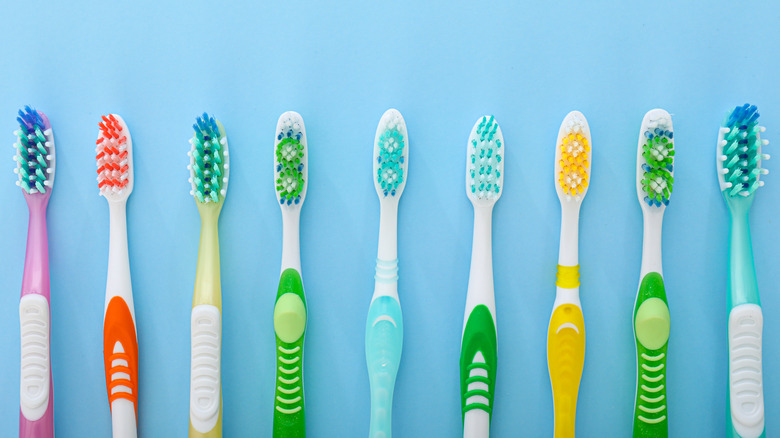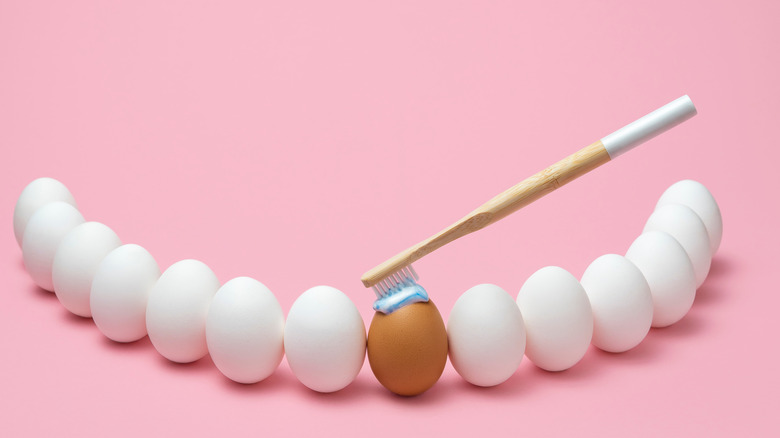Signs You're Using The Wrong Kind Of Toothbrush
Regular tooth brushing is the bedrock of good oral hygiene and staving off dental problems. But even if you brush twice a day, are you using the right tool for the job? Using the wrong toothbrush can have adverse effects on your pearly whites and overall oral health (via the Columbia Dental Center).
While there are thousands of options, the American Dental Association (ADA) recommends using a soft-bristle toothbrush with a long handle for reaching the teeth in the back of your mouth. They also recommend changing your toothbrush every three to four months, after recovering from an illness, and if the bristles have become worse for wear.
Using the wrong toothbrush can lead to several issues with your oral health, including tooth sensitivity, tooth and gum disease, and other dental problems, according to the ADA. Let's take a look at a handful of signs to watch out for that suggest you need a new toothbrush.
Tartar and receding gums are signs to watch for
There are some signs to watch out for that might indicate you're using the wrong toothbrush. One way to check if you're using the wrong toothbrush is to look at your gums. As Dr. Rick Leppo from the Columbia Dental Center explains, signs of receding gums indicate using the wrong toothbrush. In these cases, gums move from teeth in a V-shape and you may notice your teeth looking longer.
Another potential sign of using the wrong toothbrush could be heavier than usual tarter and plaque buildup. This may indicate that your toothbrush isn't doing its job of cleaning your teeth. Dr. Leppo recommends an electric toothbrush for a deeper clean or a toothbrush with a smaller head to brush teeth that are difficult to reach. Excessive buildup of plaque and tartar make your teeth vulnerable to cavities, tooth loss, and the gum disease gingivitis (via Cleveland Clinic).


